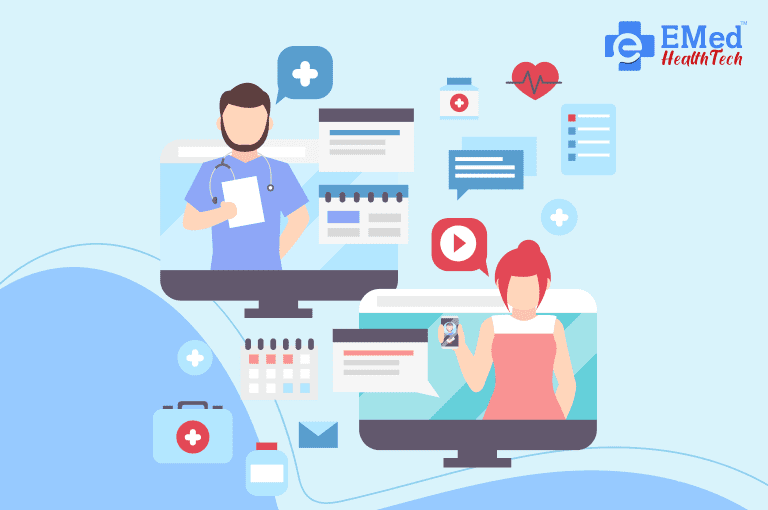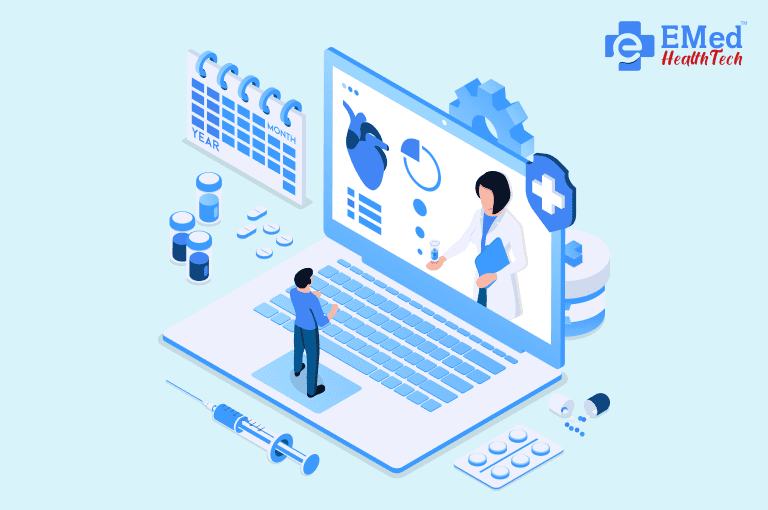Healthcare is changing with each new invention. Technology is an important part of healthcare. With it, the gap between healthcare providers and patients is decreasing.
There is an increasing use of technology to interact with healthcare. Patients’ engagement with healthcare facilities is changing. The software solutions transform healthcare delivery and improve patient outcomes, from patient portals and mobile health applications to remote monitoring systems and wearables.
Patients want to be more involved in their healthcare decisions. They are more aware of their conditions and can make informed decisions. This empowerment comes from better access to information.
Over time, patient engagement software has improved. They play a significant role in the changing healthcare world. It even leads to better outcomes for the patient.
Patient-centralized care becomes an innovative approach to the healthcare industry. In this approach, patient care and engagement are at the center of their health journey. This article explores how patient engagement software is transforming healthcare.
How Patient Engagement Software is Transforming Healthcare
Patient engagement is driving key change in the world of medicine. Let us look at some of them.
Increased patient satisfaction and outcomes
This software provides patients with more information about their condition. With more information, they know how to cope. They better have access to healthcare providers. The patients are more empowered to make active changes.
This improves patient satisfaction with the care received. The outcomes are better as they are inspired to make positive changes. Here is how healthcare IT solutions and services can help to improve patient care.
Improved patient-provider connection
With patient engagement software, patient and doctors are more in touch. This software has made medical attention more accessible. With video calls and messages, the patient can stay updated. All of these reduce the need for visiting the doctor in person.
Better learning and self-management
Patients have better access to info. The software promotes the patient to take action as they know what to do. They can work towards preventing adverse health conditions.
Lowered healthcare costs and readmissions
The software can help reduce patient readmission. With better monitoring, patients can stay home and get medical attention. They can make virtual visits via the apps. The ER can take a breather as it will be less crowded.
The doctors can monitor the patients who stay home. This allows them to recover from the comfort of their home. They can prevent health issues with more knowledge.
6 Types of Patient Engagement Systems
Patient engagement software comprises many systems and tools. They are designed to enhance patient involvement and improve healthcare outcomes. In this section, we will explore several types of patient engagement systems.

1. Telehealth
Telehealth has gained importance in these times. The global pandemic pushed everyone to choose remote healthcare services. These services focus on providing medical services in their own home. It may be a consultation or getting a prescription. Telehealth makes it all possible.
Video calls and messages connect the patient and provider. These tools help overcome the physical barriers between them.
Telehealth is ideal for those in remote places. They can connect to doctors in far-off places. It is helpful to those who have issues with mobility.
2. Patient Portals
In this app, patients can view their medical information and get refills. Specialized software is available to make schedule appointments.
Patients can communicate with their healthcare providers. They can manage their records through these software products.
With all these conveniences, patient engagement rates become high. They take an active role in their health.
3. Health Data Analytics
Health data analytics systems bring in a lot of new data sources. It analyzes patient data from different sources. They may be electronic health records, wearables tech, and patient reports. They find patterns and trends to help healthcare providers make informed decisions.
These systems help prepare personalized treatment plans. It can help spot high-risk patients and improve care delivery.
4. Automated Appointment Reminder Systems
Missing appointments can affect your health. It will affect your treatment and journey to good health. Automated appointment reminder systems can help reduce this. It uses text messages, emails, or phone calls to keep patients in the loop.
This software can help reduce missed appointments. Providers can manage their schedules better. Patients get timely care, and healthcare providers can improve their efficiency.
5. Remote Patient Monitoring
Remote patient monitoring is helping everyone keep track of their health. It takes the help of connected devices and wearable gadgets. It can collect and send real-time health data to healthcare providers. Doctors can monitor patients who stay at home. They can monitor vital signs, medication, and symptoms.
Providers can watch their health status, spot warning signs early, and act. Doctors can provide proactive and personalized care.
6. Healthcare Payment Automation
Healthcare payment automation systems make transactions easier for patients. With automation, patients can do billing, and payments online.
Patients can review and manage their healthcare expenses better. They will get automated reminders on their devices. These systems improve patient satisfaction and make the processes smoother.
Innovative Technologies That Enhance Patient Engagement Solutions
Technology is improving at breakneck speed. The medical world is warming up to adopting this tech. Patient engagement software is getting better by the day. There is exciting new tech that is disrupting the world of patient engagement. They are the:
- Internet of Things (IoT)
- Artificial Intelligence (AI)
- Blockchain

1. Internet of Things (IoT) Implementation
IoT consists of devices such as wearables and connected sensors. They enable remote monitoring of a patient’s vital signs. It can keep track of physical activity and sleep patterns. With regular reminders, it can ensure proper medicine intake. This data can be used to provide healthcare providers with useful feedback.
Doctors can take timely action by monitoring these devices. Patients can get better insight into their health. It promotes self-management among patients.
2. Artificial Intelligence (AI)
Artificial Intelligence has been making waves in every realm. It has shown its magic in patient engagement solutions as well. AI algorithms can analyze large volumes of patient data. It can identify patterns, and generate insights. This new information can help doctors come to accurate diagnoses.
With this data, they can make better treatment plans and personalized care.
AI brings AI-powered chatbots into the picture. They can be virtual assistants that interact with patients. They can provide information and quick answers. Chatbots can provide support and help in such times.
They identify patients who are at risk of certain conditions. With predictive analysis, at-risk patients can seek quick help.
3. Blockchain
Blockchain technology has the potential to transform healthcare. It provides a whole new level of security and transparency.
With blockchain, information is safe from tampering. This ensures they are in better control of their data. They can share their healthcare journey in safe accounts.
It allows different facilities to communicate sensitive data. This can improve care coordination and patient outcomes.
Healthcare providers are recognizing the potential this technology holds. Thanks to it, patient engagement solutions are getting better.
Summing Up
Patient engagement software plays a significant role in transforming healthcare. As technology advances, these solutions are becoming more effective.
The healthcare industry is integrating these solutions. It can lead to better outcomes for the patients as well as doctors. It leads to better interactions and an overall reduction in costs.
If you want reliable patient engagement software, we, at EMed HealthTech, can help. EMed HealthTech is a leading custom healthcare software development company.
We have a proven track record in healthcare app development. We focus on innovative and user-friendly healthcare software. You can enhance patient engagement and improve healthcare delivery, with EMed HealthTech.
Ready to take the next step in transforming your healthcare service? Contact us today!










